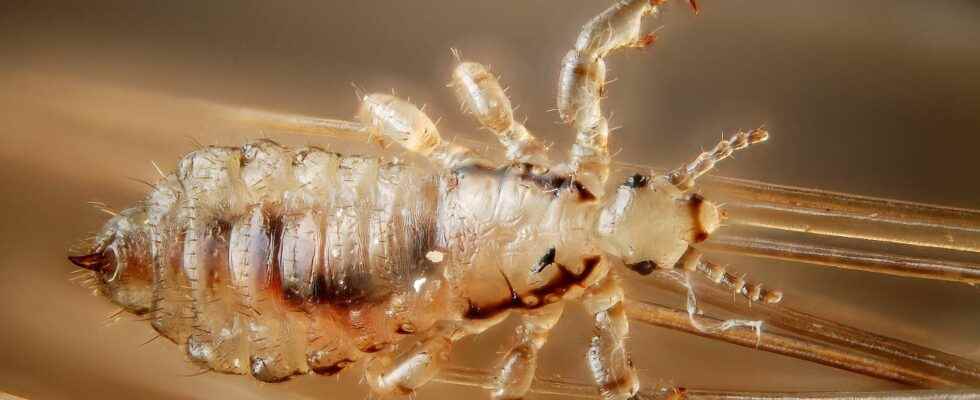They blind, paralyze the face or devour the eardrum: these horrible parasites that enter our bodies can trigger serious illnesses.
You will also be interested
The parasites are organisms that come at the expense of a host during part of their life cycle. In humans, they are sometimes the cause of diseases affecting millions of people or symptoms impressive. Toward of several tens of centimeters or amoebas unicellular, here are the most formidable.
Wuchereria bancrofti gives the appearance ofElephant Man »
L’elephantiasisWhere filariasis of Bancroft, results in impressive swelling of the limbs. It is caused by infection with three kinds of filarial worms, including the Wuchereria bancrofti, responsible for 90% of cases. The latter produces millions of small larvae called microfilariae which are transmitted by mosquitoes. These migrate to lymphatic system and when they become adults, they can lead to tissue swelling, buildup and thickening of the skin in the limbs. In 2000, more than 120 million people were infected and about 40 million of them suffered from disabling and stigmatizing deformities, according to the WHO.
Australian tick paralyzes muscles
If in our regions the tick is likely to transmit the Lyme disease, Ixodes holocyclusa species endemic to Australia can literally cause lightning paralysis. It is manifested first by vomiting, then in the lower limbs by a loss of coordination and muscle strength. The paralysis then appears within 24 hours, gradually spreading to the rest of the body. If the tick is not removed quickly, damage to the respiratory and swallowing muscles can lead to death. Human cases are fortunately rare, but it is estimated that 100,000 domestic animals are affected each year.
Wohlfahrtia magnifica eats the ear from the inside
The fly maggot Wohlfahrtia magnifica is at the origin of a myiasis affecting most of the time the ear. The larvae invade the ear-drum then attack the bone wall of theinner ear and sometimes thebrain, which can lead to death. The maggot can also attack the eyes, destroying the globe ocularwhere the nose, with sinus invasion. The Cayor worm (West Africa) and the macaque worm (South America), from the same family, infect clothing or sheets. They cause furuncular myiasis, with the appearance of a purulent nodule with a feeling of “something moving” under the skin. The maggot of about 10 millimeters comes out after a few days, but can cause edema or allergic shocks.
Onchocerca volvulus makes you blind
Caused by a microfilaria of the worm Onchocerca volvulusI’onchocerciasis affects skin and eyes. The ocular form, which plagues 30 African countries, is the fourth leading cause of blindness in the world. It occurs when the microfilariae migrate up to theeye and die there, causing an inflammatory reaction that will cloud the eye. In the 1970s, up to 50% of adults suffered from “river blindness” in certain areas. The disease was the subject of a vast plan of prevention and treatmentivermectin, but millions of people are still considered at risk. Note that there is also a cutaneous form of onchocerciasis, causing severe dryness and early aging of the skin.
Naegleria fowleri “eats” the brain
Nicknamed “eater of brain », Naegleria fowleri is a amoeba living in the warm waters of lakes, marshes or poorly maintained swimming pools. It is the cause of a very serious encephalitis, primary amoebic meningoencephalitis (MEAP), fatal in 95% of cases. Infection occurs when swimming or inhaling water droplets carried by the wind : the amoeba infiltrates the nose and then migrates to the brain. After one to nine days appear headaches, vomiting and feverthen confusions, hallucinations and attacks. Fortunately, the disease is infrequent: in 50 years, 310 cases have been recorded worldwide, including only one in France (in Guadeloupe).
Trypanosoma brucei makes zombie
Trypanosoma brucei is a worm protozoan flagellated at the origin of the trypanosomiasis African Human (HAT), also called sleeping sickness or Chagas disease in its American form. This is transmitted in particular by the tsetse, or tsetse fly, which bites to feed on blood. The parasite then multiplies in the blood and lymphthen migrates to cerebrospinal fluidwith onset of neurological disorders (movements abnormal, irritability, psychotic reactions, aggressive or apathetic behavior…) and drowsiness. Untreated, trypanosomiasis causes the coma and death within weeks. Some 70,000 people are affected each year in Africa, according to the WHO, and 75 million are at risk of catching the disease.
L’roundworm colonizes the lungs
Measuring up to 30 cm in length, theroundworm is a roundworm of color dew up to 20 cm long. It is transmitted by ingestion water or contaminated food. The female lives in thesmall intestinefeeding on food bowl and can lay up to 200,000 eggs per day. These release embryos which cross the digestive wall and reach the liver then, in some cases, the lungs through blood. They then cause a syndrome of Löffler, with pulmonary opacity, cough and fever. But the most serious complications are of a digestive nature, sometimes with appendicitis or acute pancreatitis. Ascariasis is the parasitosis the most common in the world: it affects a quarter of the world’s population, mainly in developing countries.
Leishmania leaves purulent scars
Leishmania is a parasitic protist responsible for leishmaniasis, a disease that affects 1.5 to 2 million people each year, including in France. It is transmitted to humans when bitten by the sandfly, a kind of small mosquito. the leishmania is then “swallowed up” by the macrophages where it turns into an amastigote by losing its flagellum. Depending on the location of the infected cells, the symptoms differ. The cutaneous form is characterized by large scabs can leave indelible scars. The visceral form, the most serious, is manifested by fever, weight loss, swelling of the liver, missed and lymph nodes. It is fatal if left untreated.
Interested in what you just read?
Subscribe to the newsletter Health question of the week : our answer to a question you ask yourself (more or less secretly). All our newsletters
